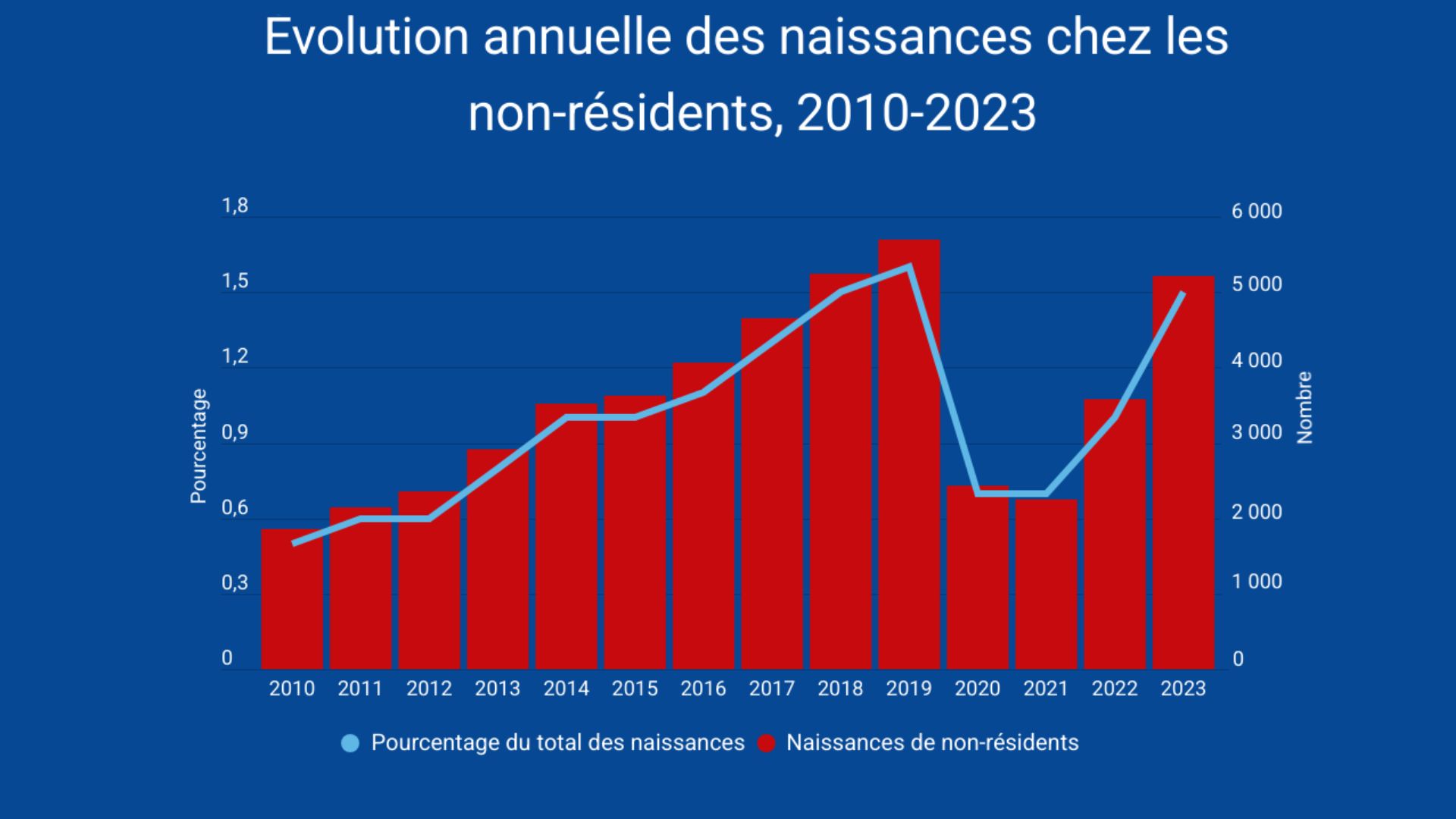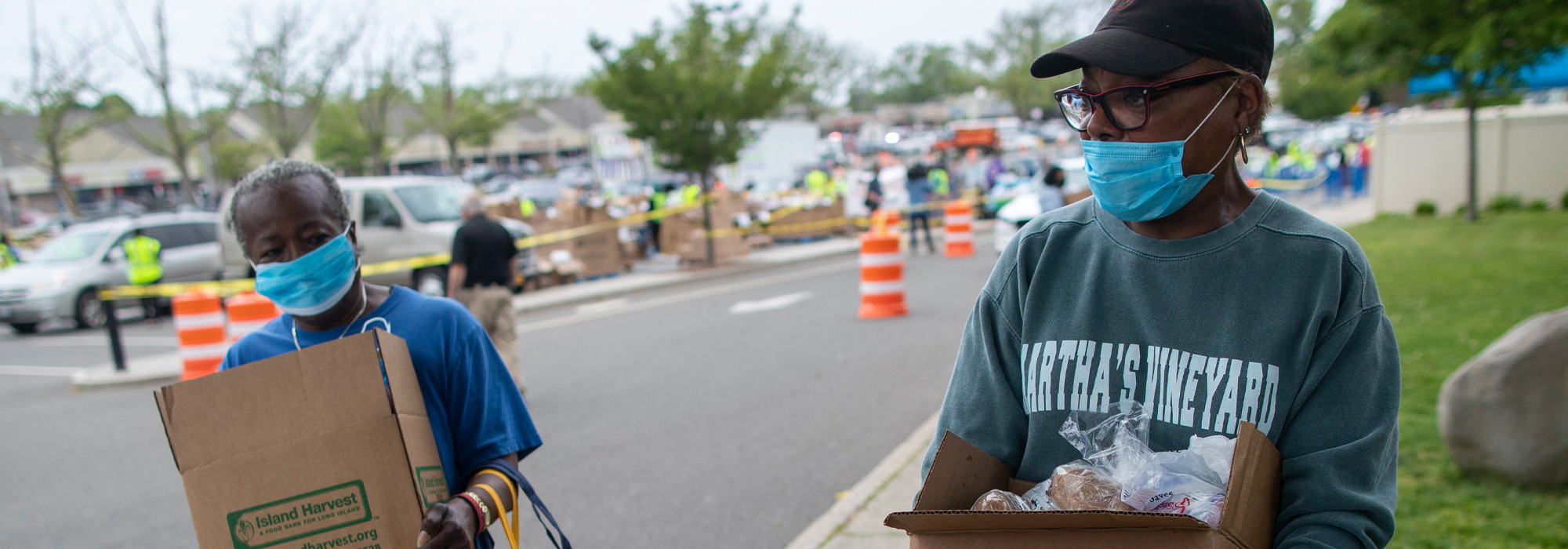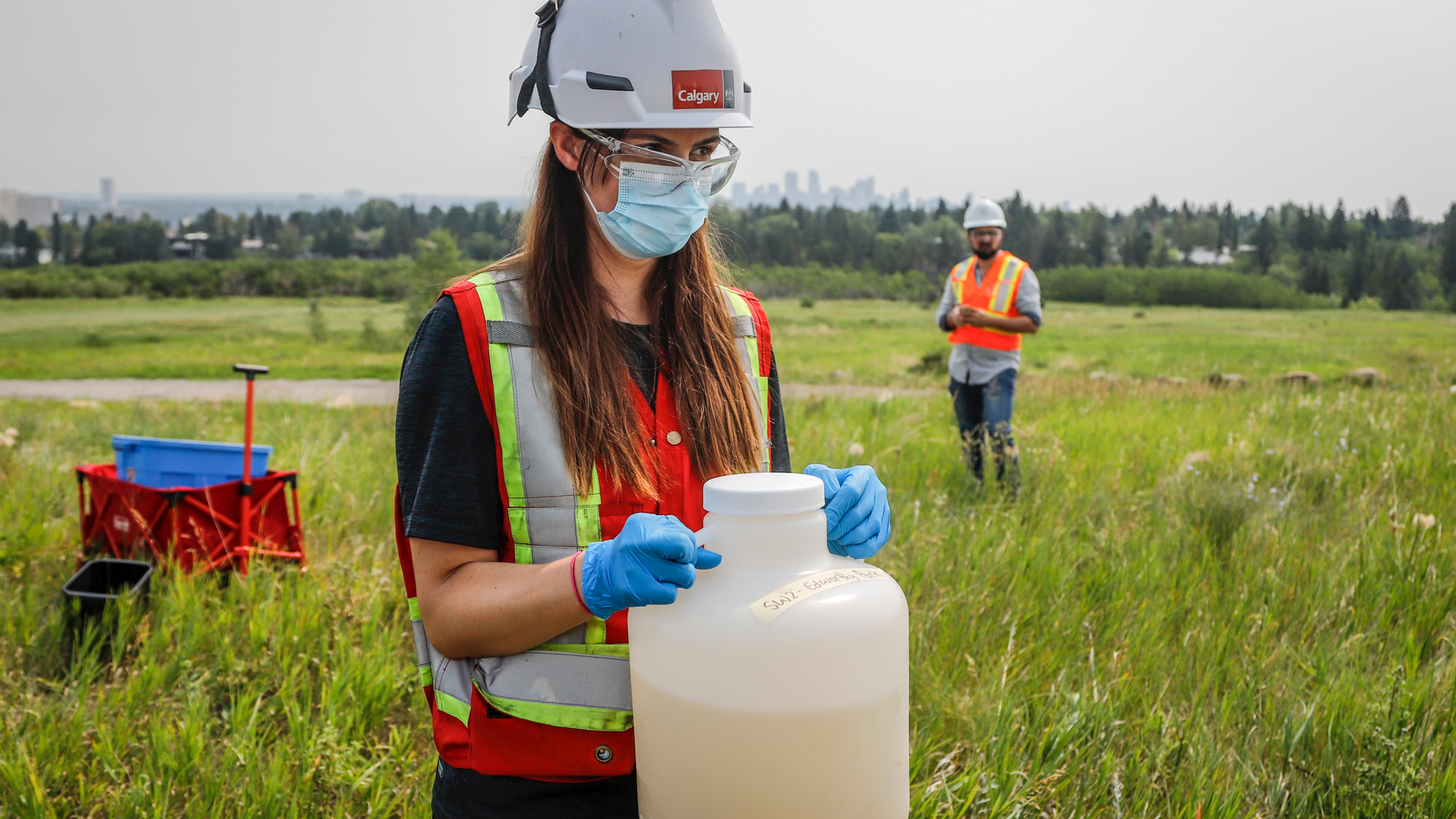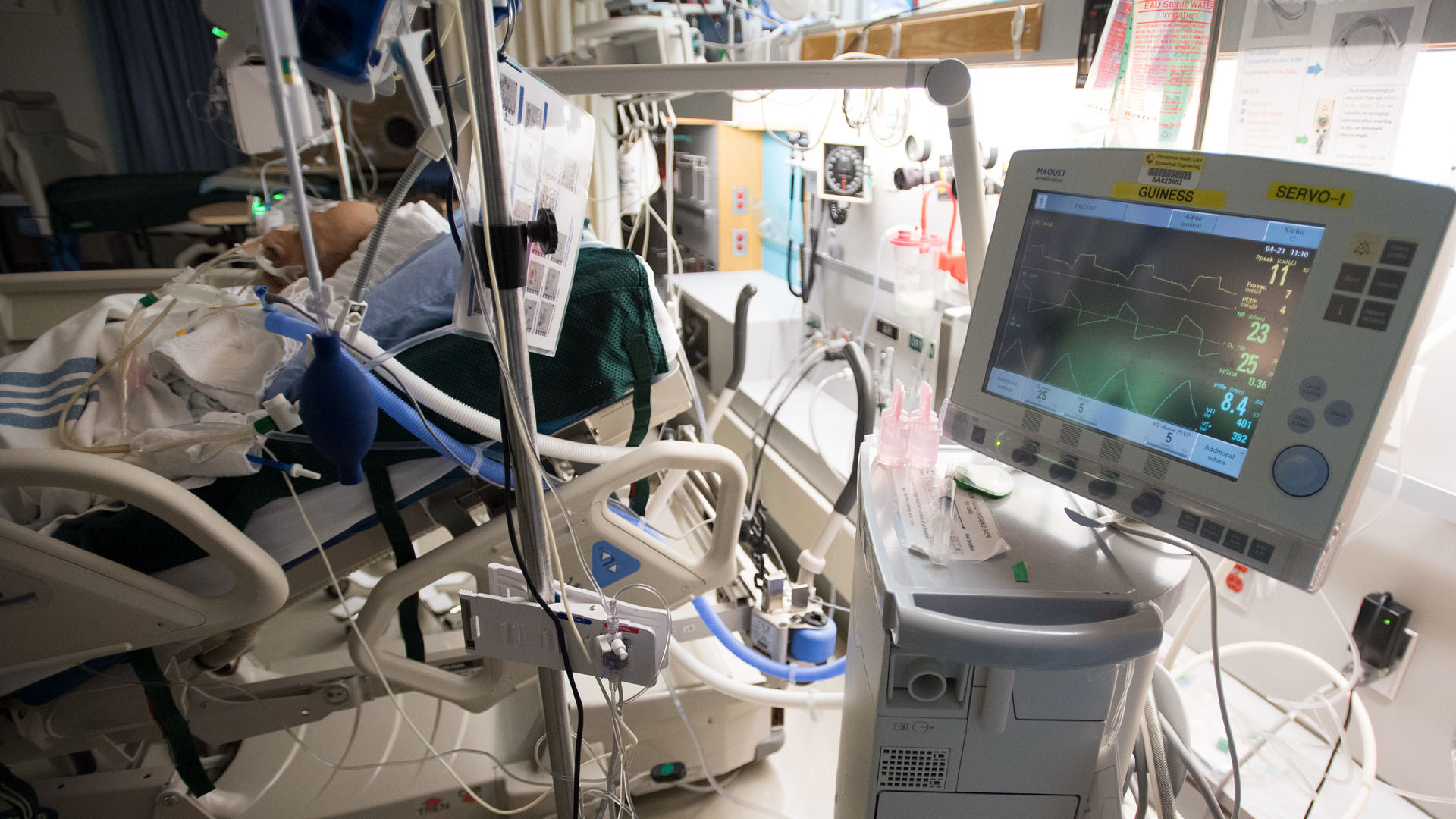
The impact of the coronavirus pandemic in the United States and the resulting recession is best understood in the context of what has happened to the U.S. economy over the past 40 years. These four decades marked a period of growing economic inequality and slower growth that left the economy and our workers and families more vulnerable to economic shocks.
Prior to 1980, when our economy grew, the benefits were distributed fairly equally. But beginning in the 1980s, policy-makers began worshiping at the altar of markets, forsaking the government’s role in ensuring economic progress. The result? The wealthy gained the lion’s share of growth. (See Figure 1.)
For the wealthiest, the Great Recession of 2007–09 turned out to be a temporary blip. But when the pandemic hit U.S. shores, working- and middle-class families had barely recovered, and younger generations and families of colour, on average, never recovered. This both reflected and exacerbated the growing inequality of the previous decades.
Today’s inequality stems from three specific lasting impacts on our economy and society. First, high inequality constricts growth by obstructing the supply of people and ideas into the economy. For example, lack of access to quality education deprives the economy of the human potential of millions of low-income children.
Next, it subverts our political system and other institutions that manage the market. Greater economic resources transform into greater political power for the wealthy and large corporations. These then have the capacity to manipulate policymaking institutions to reduce taxation and investment in people and infrastructure and to reinforce excessive economic concentration. Combined, this results in distortions in both investment and consumption, leading to slower investment and productivity growth as well as creating fragilities for families more likely to rely on debt.
So, it’s no surprise that the novel coronavirus pandemic hit the United States harder than nearly any other country. The U.S. grimly boasts one of the highest death rates from COVID-19, the disease caused by the virus, and leads the world in both coronavirus cases and deaths. Especially hard hit are the most vulnerable in our society: the elderly, low-income people and people of colour.
Soon after the pandemic and the recession began to roar across the country, I made five predictions about the US economy in 2020. First, I predicted we would be hit harder than our competitors, and indeed, not only have we been hit harder by the virus but the U.S. economy also seems likely to recover far more slowly. By pushing to reopen state economies that were not ready, President Donald Trump and some governors are responsible for the pandemic taking far more lives and doing far more long-term economic damage than it might have.
More than 20 million jobs were lost in March and April. Some jobs are returning, but the recovery is slowed by spikes in the coronavirus and the halt to federal aid programs. And yet, some of the largest firms are experiencing boom times during the recession, and better-off workers who can perform their jobs remotely also are doing well.
We are not experiencing either the U- or V-shaped recovery we might have expected. Instead, with Americans facing dramatically different fortunes based on class and race, we’re seeing a divided, sideways Y-shaped recovery, with those on the bottom leg of that sideways Y – those in low-wage employment – likely to suffer for many months or even years.
A second prediction was that U.S. states and localities with paid sick days and family and medical leave policies would see fewer transmissions of the coronavirus. Research tells us that mandated sick leave reduces the rate of seasonal flu by as much as 40 percent. While the United States has no nationwide policies giving workers paid sick days and paid family and medical leave, some states and localities have enacted their own policies. A limited national sick leave policy enacted earlier this year expires in December. Some newer studies suggest there will in fact be less transmission of the coronavirus where such policies are in place.
My third prediction was that transmissions would be higher because high medical costs, in the absence of universal health care, would cause many workers to fear going to the doctor. The 27 million Americans who lacked insurance before the pandemic were quickly joined by perhaps five million more due to layoffs at the beginning of the recession. Federal legislation has made COVID-19 tests free, but not COVID-19 care, and there is evidence that many people are in fact avoiding seeing their doctors because of medical costs. It’s likely this, too, is contributing to a higher transmission rate.
The fourth prediction was that the recession would be deeper and more protracted because our social support system is one of the worst among developed countries. The U.S. unemployment insurance system is woefully underfunded and weakened by calculated neglect. And the $600 weekly supplement approved by Congress earlier this year expired at the end of July. Similarly, food assistance has not increased to meet increased need. Since Congress seems unlikely to provide the support that is necessary to address weaknesses in existing programs, this prediction also seems likely to be borne out. This looming failure is going to put a crunch on personal consumption and demand in the U.S. economy.
My final prediction was that we would experience the recession more deeply because policy-makers don’t understand that the economy depends on people. The economy needs people to stay healthy so they can work and to have the resources to consume. American workers have been vulnerable, and families are hurting. This is undoubtedly slowing down the economic recovery.
What do policy-makers need to do to get on a path toward an equitable recovery that paves the way for strong and broad-based growth? First, we need to contain the coronavirus. It’s shocking that the world’s leading economy still does not have in place a comprehensive plan for testing, tracking and tracing.
We also need to renew the relief for workers, families and small businesses that expired at the end of July and keep it in place until we recover fully. Plus, we need to give every worker access to a safe working environment, paid family leave, paid sick leave and health insurance.
In the long run, the federal government needs to raise revenues. We’ve created a lopsided, inefficient tax structure by giving massive tax cuts to families at the top of the economic distribution. And we’ve done a poor job of taxing wealth and of making corporations pay their fair share. There is plenty of room to raise taxes equitably to finance important initiatives and investments.
The importance of small businesses is one of the few things on which politicians of all stripes agree. Yet, despite their rhetoric, in this moment of existential threat, the political system has produced far greater support for big businesses, and this will have painful long-term economic consequences. For those small businesses that survive this crisis, the advantages already held by their biggest competitors, suppliers and purchasers will only get stronger unless policymakers tighten US antitrust laws to prevent more market concentration.
We also need to change the way we measure economic growth. With massive inequality, changes in aggregate Gross Domestic Product do not measure how average Americans are faring, but rather how the wealthy are doing. Measuring growth by how it affects Americans at all levels on the income ladder instead of in the aggregate would give policy-makers the necessary information to create a roadmap to reduce inequality and support growth.
And, we need to address our nation’s persistent historical racial inequities. The vulnerability of Black, Latinx, and Native American families to the effects of the coronavirus and the recession is stark. Government must make sure the needs of the people, regardless of race or income level, are truly reflected in the policy agenda. Only then will everyone be able to develop and deploy their talents and skills, resulting in true prosperity.
I hope my predictions turn out to be wrong. In the meantime, the coronavirus continues to lay bare deep fragilities in the US economy and society, steeped in vast inequalities. Depending on how policy-makers respond over the next several months, we can either begin to transform by igniting a swift recovery that builds a foundation for strong, stable, and broad-based growth, or we can leave our people to struggle with sustained unemployment and stagnant wages, and remain vulnerable to the next economic shock and next public health crisis.
This article is based on a presentation made at the 25th annual Queen’s International Institute on Social Policy, which was held online this year between August 25-September 21, 2020.
This article is part of the Tackling inequality as part of Canada’s post-pandemic recovery special feature.
Photo: Betty Chandler, left, and Sheila Barron carry groceries they received during a food distribution drive sponsored by Island Harvest Food Bank in Valley Stream, N.Y., on May 28, 2020. (AP Photo/Mary Altaffer)








